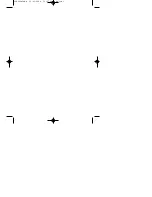
Identive Cloud 3700 F – Operation Manual
Version: 0
Page 4 of 5
1
Scope of the document
The document provides the Operational description of Cloud 3700F reader.
2
About the reader
Identive Cloud 3700F is a USB based Contactless smartcard reader capable of reading
ISO14443 Contactless cards. The reader
connects to a host PC via USB2.0 Full speed interface.
3
Operating conditions
Operating temperature
:
-20 to +70 C
Storage temperature
:
-25 to 85 C
Humidity
:
95%RH
4
Driver installation
Follow the sequence of steps
•
Plug in the reader to a Windows
•
The PC prompts for a driver
•
Select Microsoft CCID driver and install the driver
•
After the driver installation, the reader is ready for use
5
Communication with a card
Follow the sequence of steps to communicate with the contactless card,
•
Plug in the reader to a Windows PC and load the driver
•
Launch the PCSCDIAG utility
•
Place a contactless card on top of the reader
•
Check the ATR of the card being displayed
6
Certification - FCC
This device complies with Part 15 of the Federal Communications Commission (FCC) Rules.
Operation is subject to the following two conditions:
•
This device may not cause harmful interference.
•
This device must accept any interference received, including interference that may
cause undesired operation.
This equipment has been tested and found to comply with the limits for a Class B digital
device, pursuant to Part 15 of the FCC Rules. These limits are designed to provide reasonable
protection against harmful interference in a residential installation. This equipment generates, uses
and can radiate radio frequency energy and, if not installed and used in accordance with the
manufacturer’s instructions, may cause interference harmful to radio communications. However, there
is no guarantee, however, that interference will not occur in a particular installation. If this equipment
does cause harmful interference to radio or television reception, which can be determined by turning
the equipment off and on, the user is encouraged to try to correct the interference by one or more of
the following measures:























